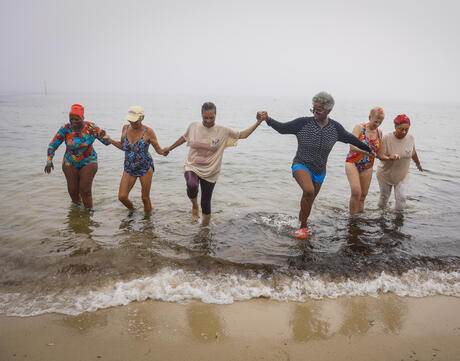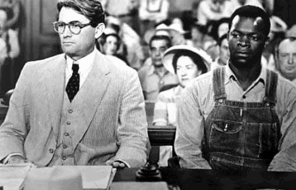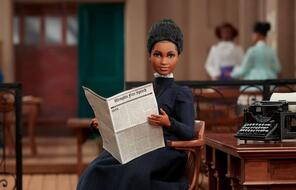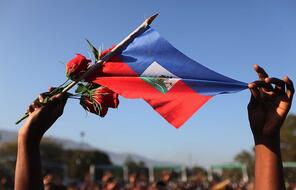A stop on the Underground Railroad.
A gathering spot for Black luminaries, politicians, and civil rights leaders.
A safe-haven vacation spot for Black families for well over 200 years.
Martha’s Vineyard might not jump to the top of most Americans’ minds when they read these facts, but the little island off Cape Cod has a rich and varied history that includes being a favored spot among African Americans looking for refuge, relaxation, and community. The still family-operated (although temporarily closed for renovations) Shearer Cottage has been a popular island spot for over 100 years. The Green Book, the annual guidebook published from 1936-1967 that provided African Americans with advice on welcoming places to eat and sleep while traveling through the Jim Crow-era United States, listed it as one of its recommended safe spaces.
In the late 1990s the lack of public teaching of the history of Black life on Martha’s Vineyard inspired two local women to put up four plaques representing important people and places in the island’s rich African American history. More than 26 years later, the efforts of Elaine Weintraub, a retired high school teacher, and Carrie Tankard, current vice-president of the Martha's Vineyard Chapter of the NAACP, have transformed into the African-American Heritage Trail of Martha’s Vineyard. Now nearly 40 sites of historical significance circle the island, with a concentration of sites around the town of Oak Bluffs, where the majority of Black residents and vacationers have always congregated.
The histories that unfold along the African-American Heritage Trail highlight fascinating local stories and heroes that underscore what a relatively large part this small spit of land has played in the story of Black America. Marked segments include these fascinating highlights from the annals of history:
- The Fugitive Slave Act was law, but members of the Wampanoag Tribe of Aquinnah risked their lives by offering shelter and assistance to enslaved people on the run toward freedom.
- See the home of Dorothy West, one of the Harlem Renaissance writers and a longtime denizen of Martha’s Vineyard. Her stories appeared in major publications of the 1930s and 40s at a time when few Black female authors were published.
- Get to know Emma Maitland: Championship boxer, dancer at the Moulin Rouge, teacher, nurse, bodyguard.
- The formerly enslaved minister John Saunders, credited for bringing Methodism to Martha’s Vineyard in 1787, is remembered next to a “pulpit rock” thought to be a spot from which he preached.
Discover more about these histories and others through the interactive map of the African-American Heritage Trail, perfect for scoping out important spots on the island and for planning your own path of exploration.
The African-American Heritage Trail continues to grow, but beyond this particular way to interact with the Black history of Martha’s Vineyard is the thriving present-day African American culture on the island. Longtime resident Carol Fulp has said that “Black joy thrives on the island.” She and others have worked to ensure that Martha’s Vineyard will remain a safe and happy place for Black vacationers, and anyone looking to relax and have fun.
Turning 22 in 2024, the Martha’s Vineyard African American Film Festival one-ups itself year after year, bringing out the elite of the movie-making industry for a summertime event that mixes business, pleasure, and African American culture on and off screen. The Washington Post has referred to Martha’s Vineyard as “Black Hollywood’s hot spot.” And going all the way back to 1946 is another institution of summer on the island: the Polar Bears of Martha’s Vineyard. From July 4 to Labor Day Inkwell Beach plays host to a predominantly African American group—although anyone willing to dip in the ocean is warmly welcomed—who gather every morning at 7:30 am for exercise and play in the chilly Atlantic waters.
Vacation looks different for everyone. Whether you’re the museum type, the nature type, or the hobnobbing type, there’s something for everyone on Martha’s Vineyard. And that’s a legacy that’s held true over the centuries when most places in America were not so unconditionally welcoming.
You can learn more about African American history and contemporary life on Martha’s Vineyard in the following media pieces:
Read:
Vox: “How Martha’s Vineyard became a Black summertime sanctuary”
The Vine: “On the Trail for 25 Years”
The Boston Globe: “On tony Martha’s Vineyard, a center of Black political power grows”
Martha’s Vineyard: “The Inkwell”
Watch:
CBS Mornings: “Martha's Vineyard retreat steeped in African-American history”
Today: “Martha’s Vineyard Polar Bear group began as safe space for Black swimmers, continues to thrive”














